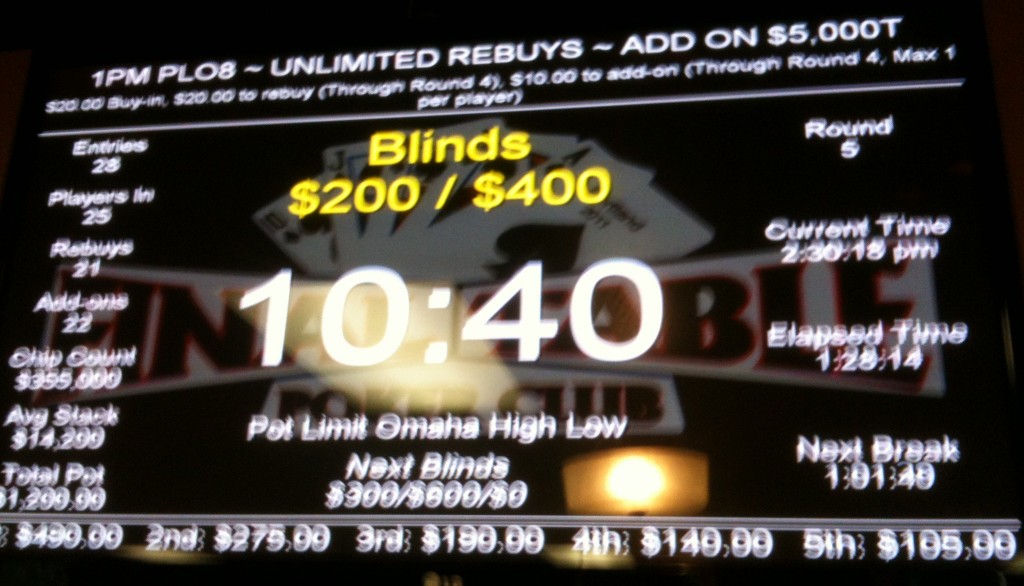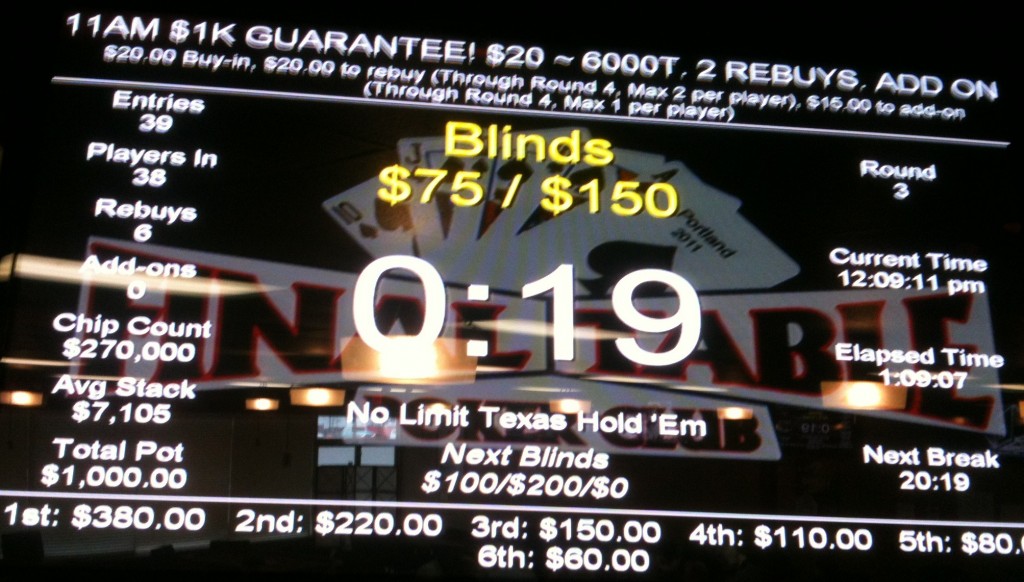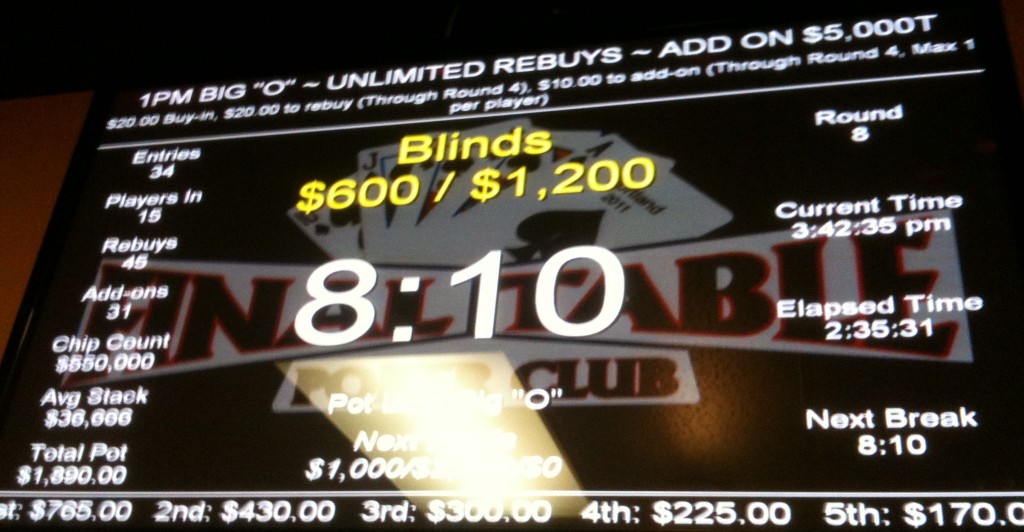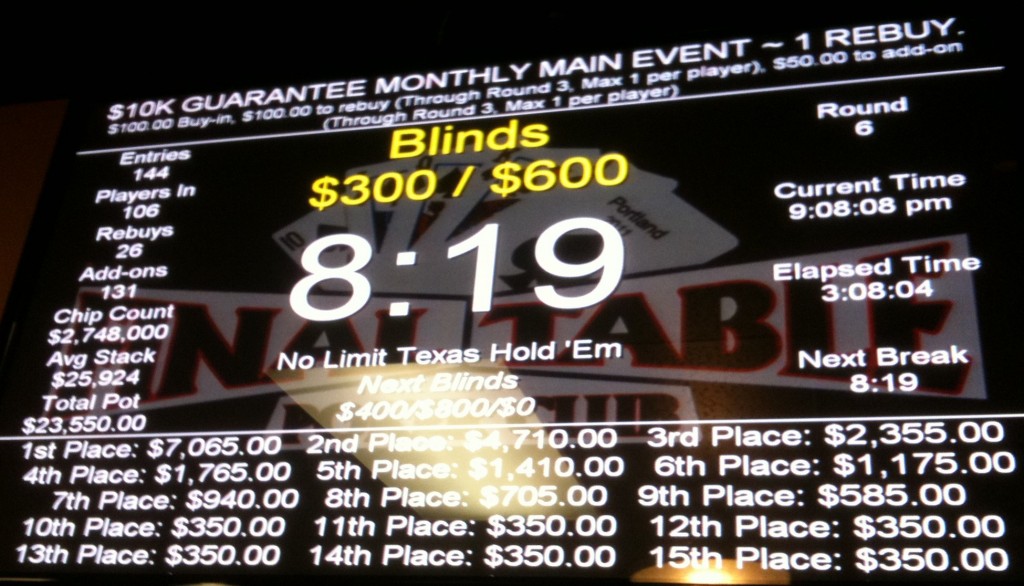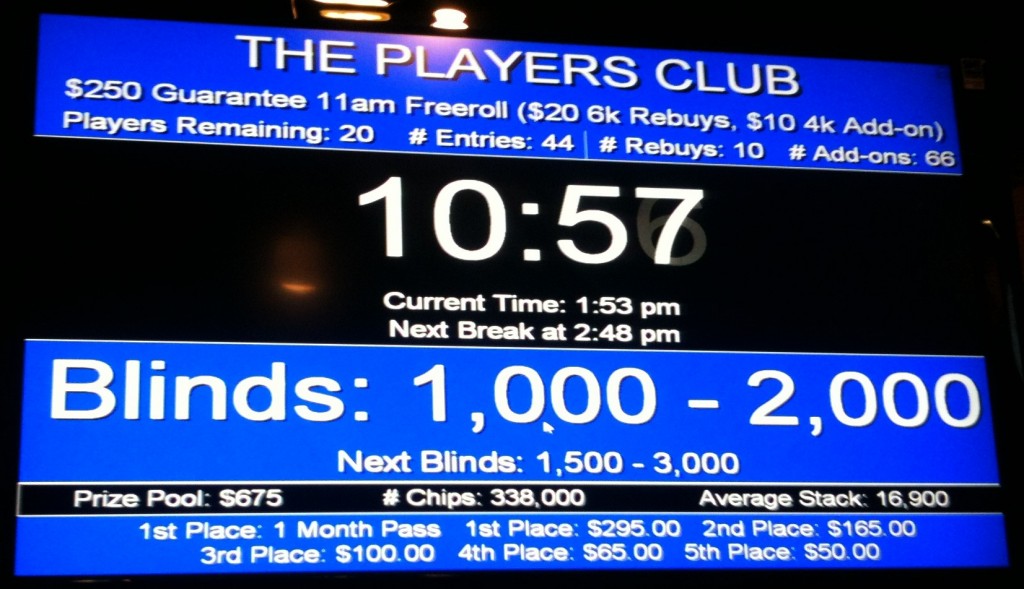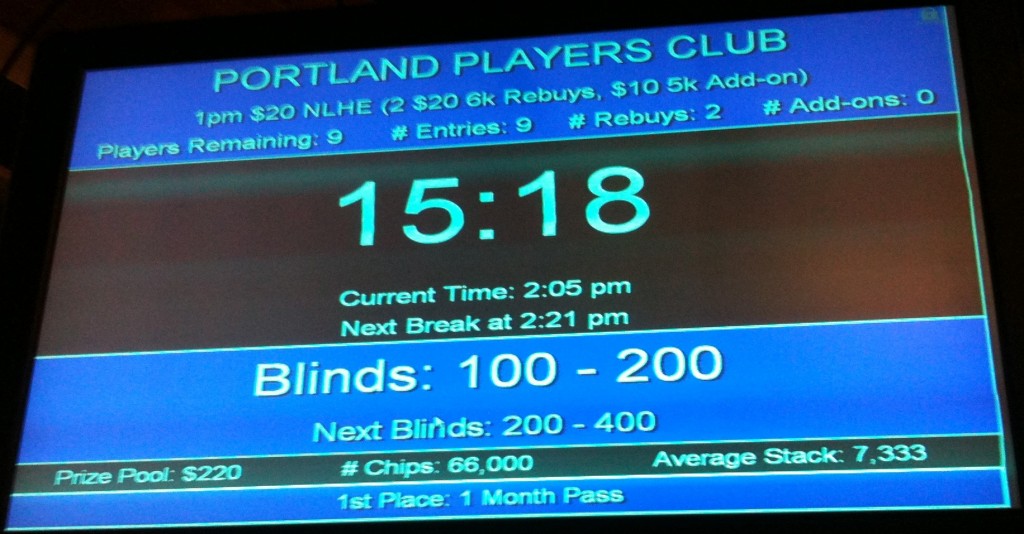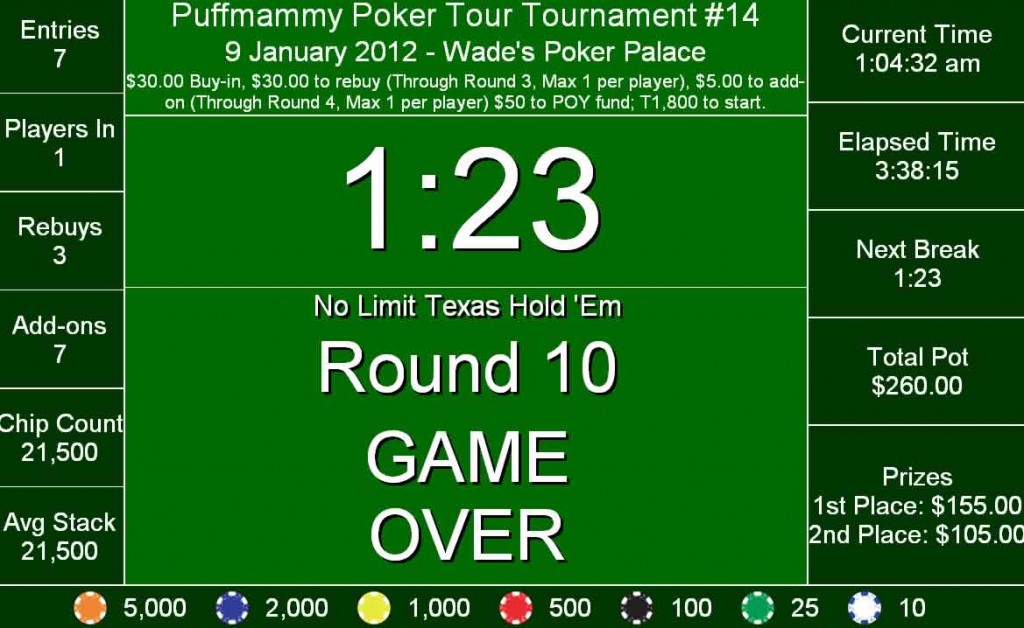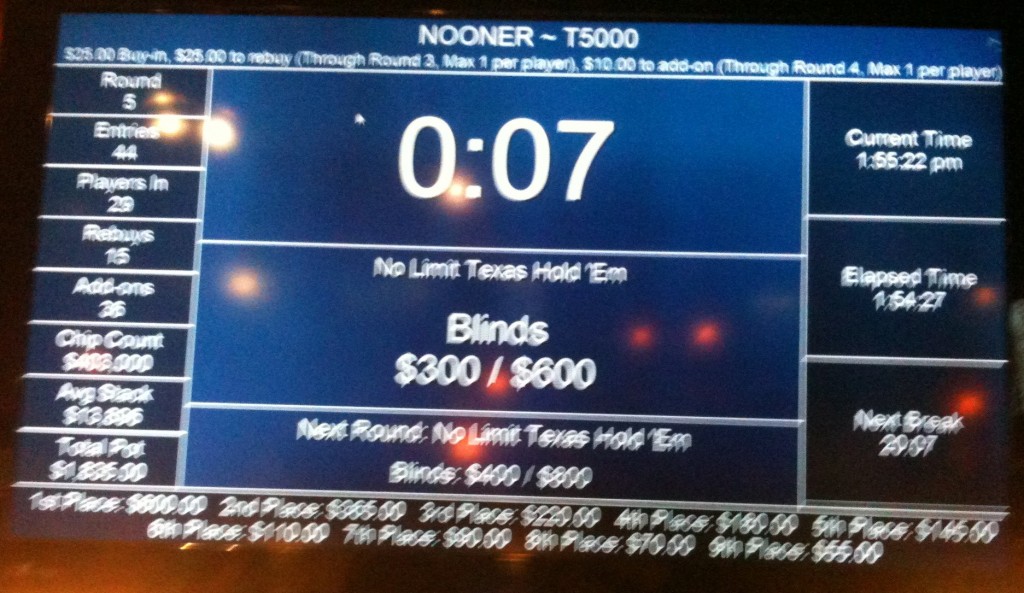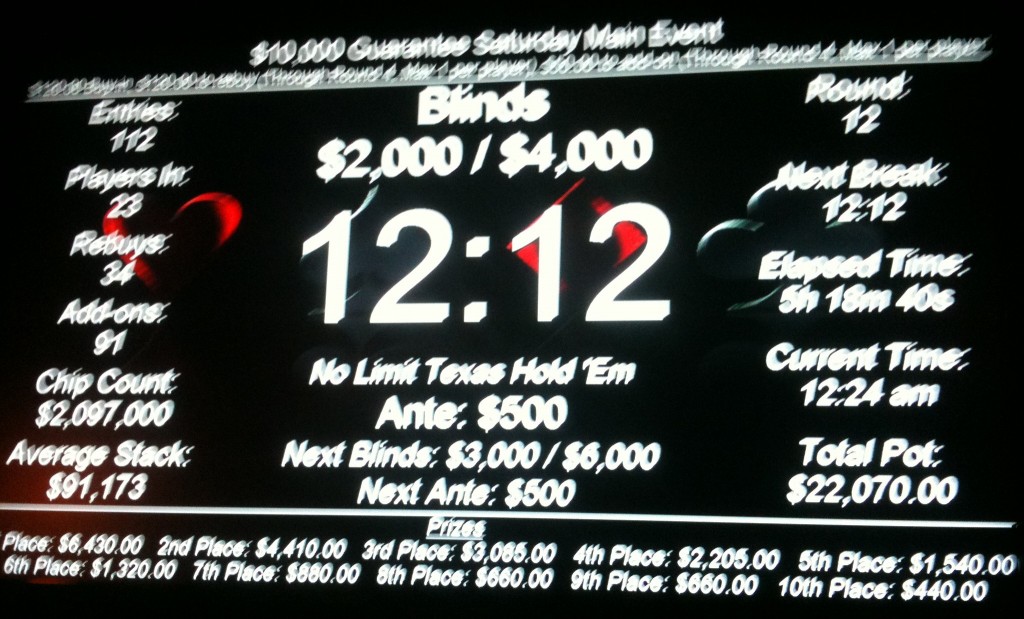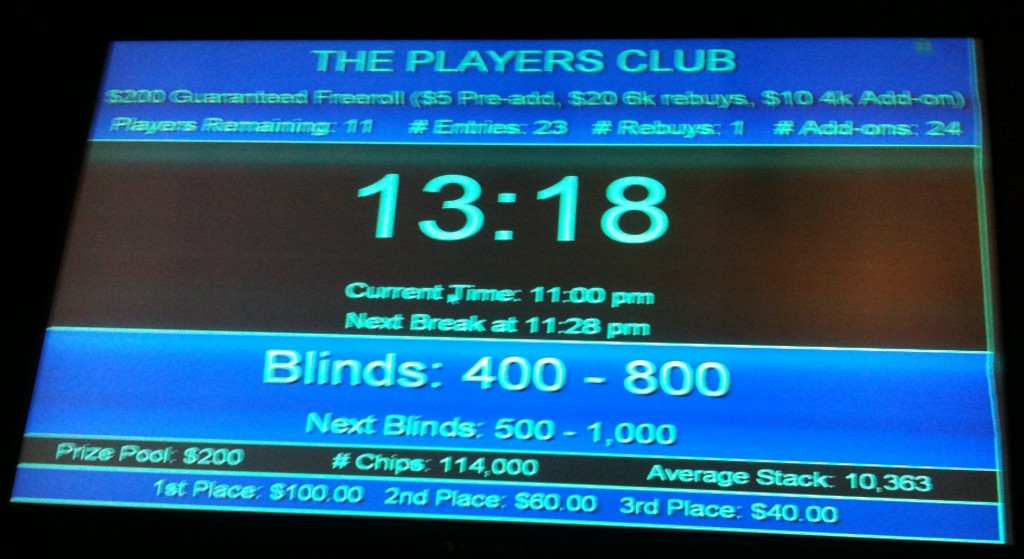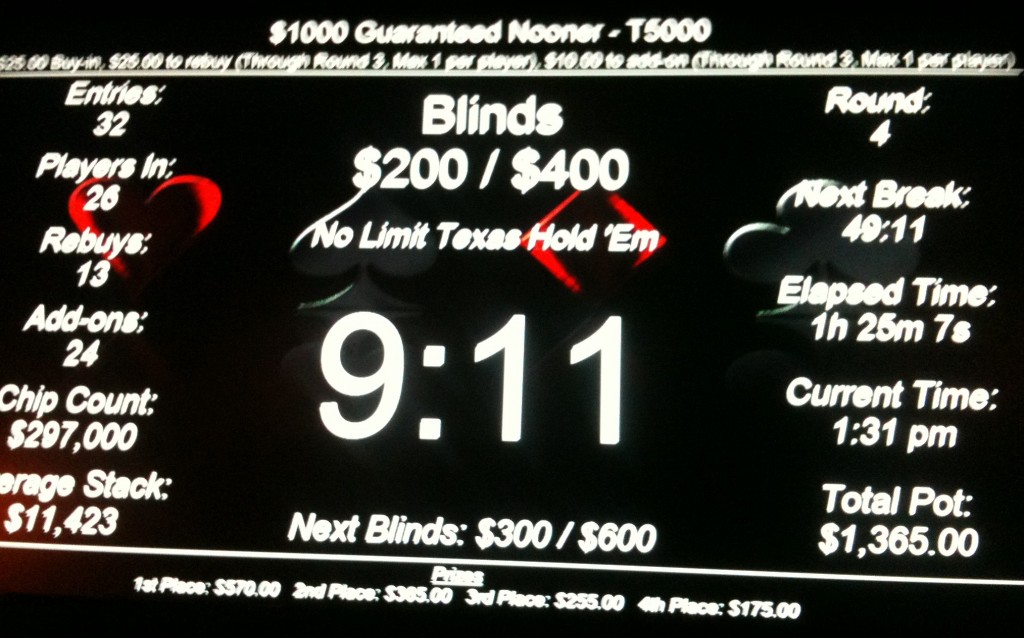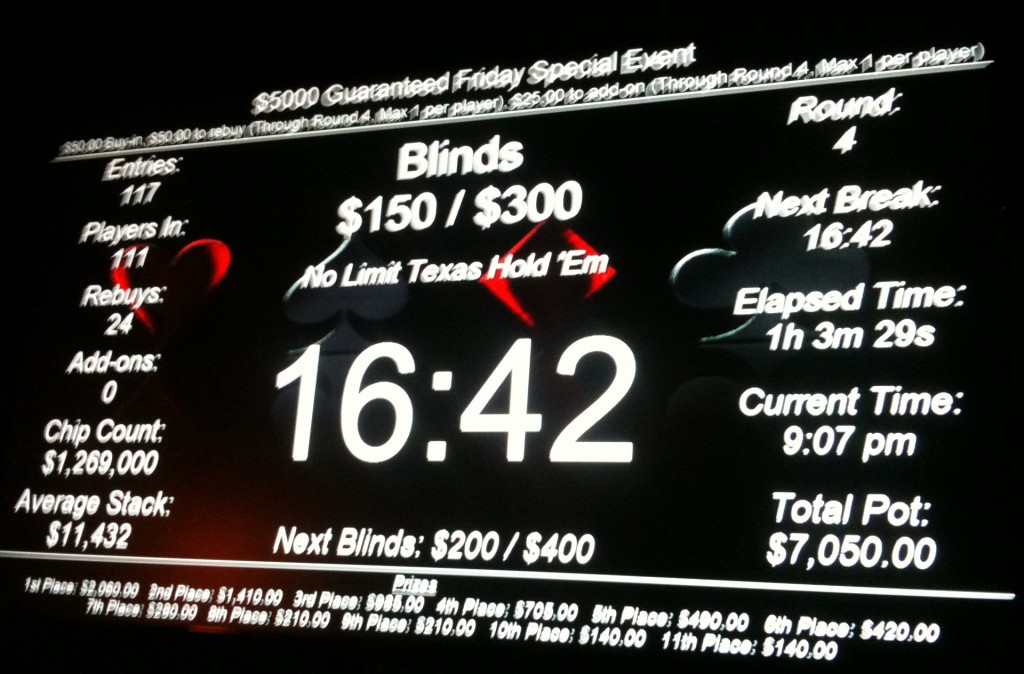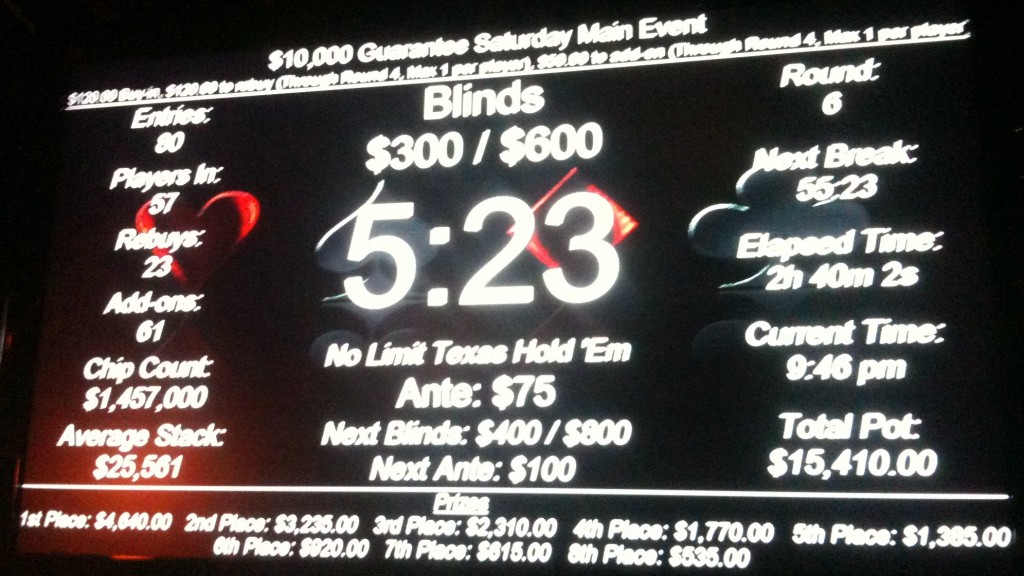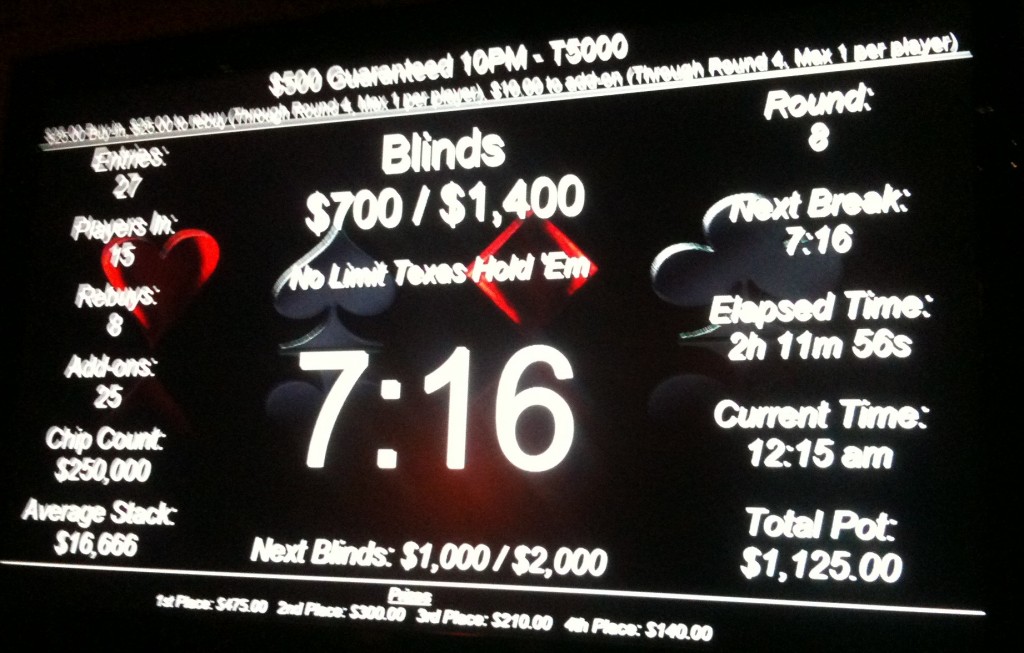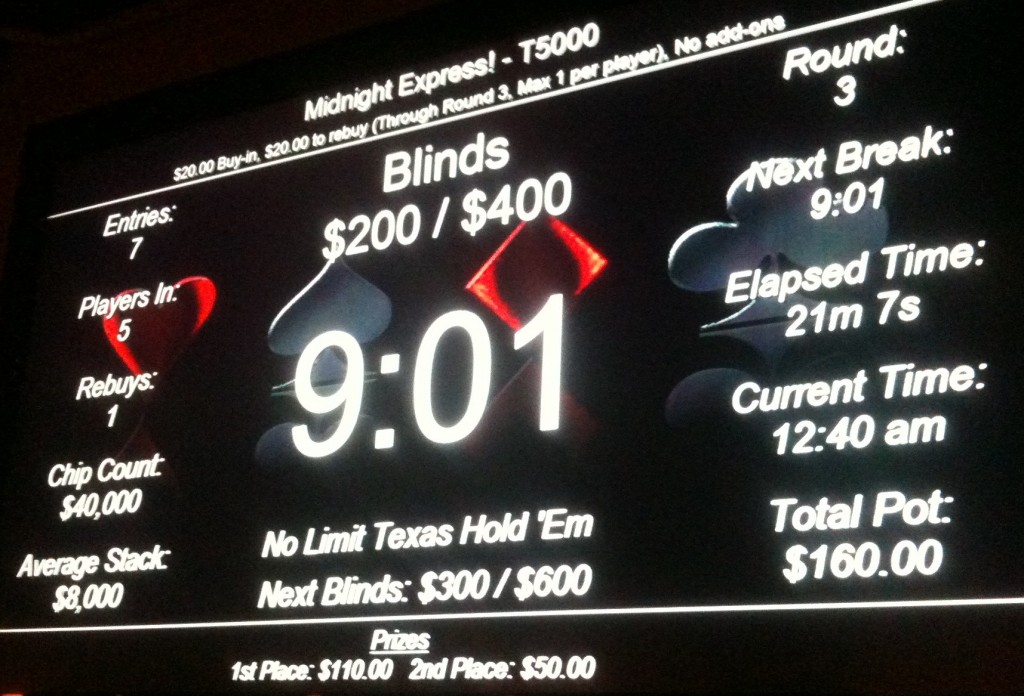Hearkening back to the discussion of median return on investment (mROI) from a couple months back, what tournaments should you be playing to maintain profitability?
The big determining factor is your in-the-money percentage (ITM). If you’re some sort of poker god and cash in half the tournaments you enter, you should be profitable, assuming your mROI is above 200% (i.e. you aren’t always min-cashing). When you’re in the more mortal realm of 12% to 18% ITM, however, the math gets a bit murkier.
Let’s assume you have a solid but not outrageous ITM value of 14%. You’re cashing in about one out of every seven games, not just small games but across the board including games with more than 100 players. If you’re playing in casinos where tips are taken out of the total prize pool, your mROI needs to be +600% or better in order to be profitable. If you’re playing in something like Portland’s social gaming clubs where the winning players need to tip the dealers in order to keep the scene going, your mROI needs to be +440% or better to stay ahead. As an example of the latter, if you enter a tournament with a $25 buy-in, a $10 add-on, and a $10 door fee, your payout needs to be about $350; pay $35 as a tip and subtract $45 for other costs, and the remaining $270 buys you the six tournament entries you don’t cash in. Although the overall mROI for social clubs is lower, the tip means that the prize has to be a higher multiple of the other costs (buy-in, add-on, door) for a positive average return (+677% in the example above).
A $350 payout for a $25 entry tournament is a fairly decent-sized prize, though. Depending on the prize structure, that’s more or less the top prize of a $1,000 guarantee tournament with 25 or 26 players. The median payout in a tournament that size would be less than $300; unless you got the top spot, you’d be dragging down your mROI.
This is why the Poker Mutant is focusing on larger fields, these days. Aside from a preference for the blinds structures of deep stack games, larger fields are simply the only way to maintain profitability. A tournament like the Encore Club’s $25K Guarantee earlier this month paid 12 places with a scheduled median ROI of +490% (the 9-way chop actually made the median ROI +1150%). But that required a field of 150 players.
Small-field tournaments in Portland—i.e. those with 20-30 players—pay about 45-50% for the top prize, with three or four places total paying (before any bubble agreements), and with the median payout in the range of 20-30% of the pot. The pot to basic cost ratio varies considerably depending on the tournament structure and club. An 11am $250 guarantee freeroll tournament at Portland Players Club ($5 door, $5 pre-add-on, $10 add-on) with close to 30 players can generate a pot to cost ratio of nearly 25:1 with a third of the players re-buying (I don’t include re-buys in basic costs because as I’ve explained, rebuys are the death of ROI). That means the median payout in those tournaments is approximately 625% of your basic cost. If you tip your dealer 10% of your 625% prize ($125), your ROI for the game is +285%, which sounds great, but only if your ITM is better than 26%. Of course, if you win the top prize in that tournament you’re doing better, but then if you cash in third you’d better be cashing in almost every game you play.
Games that induce a lot of re-buys, like the afternoon Pot Limit Omaha Hi-Lo tournaments at The Final Table ($10 door, $20 buy-in, $10 add-on), can change the math a little. It’s not uncommon for there to be nearly as many re-buys as original entries, which can juice the pot a bit. One game late last year had 28 entries, 21 re-buys, and 22 add-ons, for a $1,200 pot (30:1). That’s still not a great number, though, with the median payout at just under 16% ($190), for a potential ROI of only +222%; more money but not as high a return as the median payout in the PPC game. Again, the top end does better—+450%—but that’s just keeping your head above water for someone with an ITM of 14% (and it means you need to take first place every time you cash).
Is there a sweet spot? Is there a magic number that makes it more likely that your tournament cashes will be profitable cashes? So much of that decision rests on variables like re-buy and payout structures, but in Poker Mutant’s humble opinion—in the world of Portland poker rooms, at least—you’re more likely to be profitable in events with 75 or more entrants. Apart from the opportunity of winning a big stake if you take down the top prize, which can have a pot to cost ratio of 20:1 or 30:1, the average cash in a field of that size is large enough to maintain profitability for most above-average players. You’ll still find Poker Mutant at the tables for smaller games, but our focus is on those bigger tournaments for the time being.
Anyone heading down to Reno for the World Poker Challenge?

